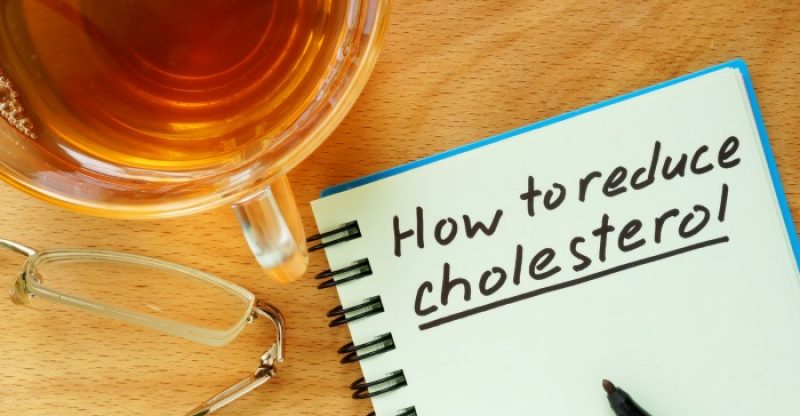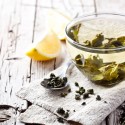How to Lower Cholesterol Naturally (15 Evidence-Based Strategies)
We all know that cholesterol can be potentially destructive to our health.
But there is more to cholesterol than that.
The term ‘cholesterol’ covers two different types, both of which are affected by various factors, from choices in food and drink to physical activity and lifestyle.
Despite this, cholesterol is definitely something that is within your control: the choices you make affect cholesterol levels and the subsequent impact it has on your body.
That is why in this article we have detailed for you 15 ways in which you can naturally lower undesirable cholesterol.
But first, let’s talk about what cholesterol actually is and does, and why not all cholesterol is unhealthy.
What is Cholesterol?
You have probably heard throughout your life that high cholesterol is something to avoid.
But do you know what the term ‘cholesterol’ actually refers to?
Before going over ways to reduce cholesterol, it helps truly to understand what it actually is, and why it is such a notorious health hazard.
First off, you should understand that cholesterol is found in all the cells in your body.
In normal levels, cholesterol is nothing to fear; on the contrary, your cells actually need it to ensure that your body functions properly.
There is also a type of cholesterol that you should ideally try to increase rather than decrease, but more on that later.
Cholesterol is basically a waxy substance that is mostly produced by the liver.
However, your diet also impacts cholesterol levels since various foods – and in particular, animal products – can add to what is already produced.
Cholesterol moves via your bloodstream to reach all your cells.
This is done in small units known as lipoproteins.
Lipoproteins (aptly referring to lipids and proteins) consist of fat in the middle surrounded by protein.
There are several functions that cholesterol assists in.
For example, the cholesterol stored in the ovaries, adrenal glands, and testes gets converted into steroid hormones, which are essential for various facets of health, from sexual health to mental health.
Another derivative of cholesterol are the bile salts that are needed for the production of bile, without which the digestion of foods and especially fat cannot happen properly.
Not only does improper digestion cause a domino effect by hampering immunity and cell function, but undigested fat can travel through the bloodstream and cause blockages that may have further severe consequences.
Moreover, cholesterol also synthesizes vitamin D using sunlight.
A deficiency may disrupt calcium metabolism and cause poor bone health (1).
Lastly, another major function of cholesterol is to help in the structural maintenance of cells.
It serves to protect cells from damage by stabilizing the cell membrane, and also plays a role in individual cells’ metabolism (2).
Good Vs. Bad Cholesterol
So given that cholesterol does so much good within your body, does this mean that it isn’t, in fact, something to be wary of
Absolutely not.
While normal levels won’t do you harm, high levels of cholesterol can be quite dangerous.
To clarify, as mentioned in the section above, there are two types of cholesterol, of which one is much more of a concern than the other.
They are often referred to as “good” cholesterol and “bad” cholesterol.
Bad cholesterol is what is technically called low-density lipoprotein (LDP) cholesterol.
Eating too much animal fats or trans-fat can increase levels of LDP cholesterol.
The reason that LDP cholesterol is labeled “bad” is that it builds upon the walls of your arteries, leaving the fatty deposits that are known as atherosclerosis.
Over time, this buildup of plaque can narrow the passage enough to cause a blockage, limiting the natural flow of blood to and from the heart.
Plaque can break down to form blood clots.
If a coronary artery that supplies blood to the heart gets blocked by a clot, the heart muscle supplied by the artery begins to die, and you may experience symptomatic chest pains and ultimately a heart attack.
It should be noted that cardiovascular disease is responsible for 1 in 3 deaths, and about 1 death every 40 seconds in the United States alone (3).
Atherosclerosis can also happen with peripheral arteries, causing cramps and/or pain and tiredness in the legs and hips.
Although a direct causal link has not been established, it is commonly believed in the medical community that high cholesterol can also damage blood vessels leading to the brain, increasing the risk for stroke.
An LDL level of 190 or more is considered very high.
If it is lower but still above 100 mg/dL, you should discuss long-term risks with your doctor, and try to limit intake of foods rich in LDL cholesterol, since there is a positive correlation between LDL levels and risk for cardiovascular disease.
On the other side, high-density lipoprotein (HDL) cholesterol, or good cholesterol, can actually protect you against heart disease and other potential effects of high LDL cholesterol.
This is because HDL cholesterol removes the bad cholesterol from your blood vessels and sends it back to the liver so that it can be removed from the body.
HDL cholesterol, found mainly in unsaturated fats and plant products, can, therefore, prevent lipid buildup in the arteries.
With this type of cholesterol, a higher level means better outcomes, since there is a negative correlation between LDL levels and risk for cardiovascular disease.
HDL cholesterol levels should be higher than 60 mg/dL.
Natural Ways to Lower Cholesterol
Now that you know the implications of both LDL and HDL cholesterol, your goal should be to decrease levels of the former and increase levels of the latter.
This can be done through the use of statin drugs, which are drugs designed to lower lipid levels.
However, statins should only be taken if prescribed by your doctor, which is usually only the case when LDL levels cross a certain threshold.
For those of you who want to take preemptive control of your cardiovascular health, there are a variety of natural options to meet such a goal.
This might mean some dietary changes, as well as a few lifestyle changes that are not food-related.
Here are some ways in which you can healthily balance cholesterol levels:
Exercise
Over thousands of generations, the human body evolved to be good at movement.
From the days of early humans and hunter-gatherers to more recent agricultural societies, physical activity played a very big part in day-to-day life and survival.
However, daily routines for most people today indicate a much more sedentary lifestyle.
If you’re not already on some kind of fitness regime, try to incorporate at least 30 minutes or more of physical activity per day.
Exercise has been shown to help reduce total cholesterol in the body, mainly by decreasing triglycerides.
It also increases levels of HDL cholesterol, which means better overall heart health.
The most effective forms of exercise have been shown to be high-intensity aerobic exercises, moderate-intensity resistance training, or a mixture of the two (4).
Even if you have very little time for yourself, setting aside ten-minute intervals a few times throughout the day to exercise can go a long way.
If you have an office job, acquiring a standing desk is a great idea, too.
And during the weekends and days off, you can work out, either by yourself or with your friends and family, by engaging in physical activity such as swimming, bicycling, hiking, etc.
Limit Smoking
It might not be obvious how something like a smoking habit – which doesn’t increase lipid levels – affects cholesterol.
It is common knowledge that smoke damages the lungs, but the truth is that smoking actually leads to heart disease more than it leads to lung disease.
Research has found that smoking decreases levels of HDL cholesterol, which is the “good” kind that helps clean up arteries.
And it has also been shown through animal lab tests that exposure to smoke may result in LDL cholesterol binding more securely to artery walls, making it more difficult to remove (5).
The good news is that if you’re a smoker, quitting the practice can reverse a lot of the damage where cholesterol is concerned.
In less than three weeks after quitting smoking, your HDL cholesterol levels will again increase back to normal and will remain there so as long as you avoid smoking (6).
Limit Drinking
Alcohol is less directly associated with health issues than cigarettes are, but if you imbibe frequently with no care for moderation, the adverse effects may be quite similar.
A key point to note with alcohol is that in small amounts, it may actually be good for cholesterol and heart health.
A glass or two of red wine each day has been shown to reduce inflammation and clotting in the short term, because of its plant sterol resveratrol (7).
Moderate consumption of alcohol has been linked to higher levels of HDL cholesterol (8).
However, unhealthy alcohol consumption increases triglyceride levels, which then increases total blood cholesterol level.
Total blood cholesterol should be kept below 240 mg/dL, and hard liquor, sugary alcoholic drinks, and even excessive use of a carbohydrate-rich beer can contribute to higher levels.
Reduce Trans Fat
With respect to dietary choices, there is nothing that raises cholesterol more than certain fats.
While you may think that all fats are harmful to your health, this is not the case.
However, trans fat is very harmful.
Trans fats are widely used in packaged products, which is why you should always take a look at the nutritional profile of any product before purchasing it.
Fried foods and packaged snacks such as cookies, chips, crackers, and others use hydrogenated vegetable oil fats.
Even if the trans-fat amount seems small, eating a variety of such foods regularly can be harmful.
It is best to avoid such foods and put any product that uses hydrogenated oil back on the shelf.
Trans fat has been shown to increase LDL cholesterol and decrease HDL cholesterol (9).
Reduce Saturated Fat
As with trans fat, saturated fat is another villain when it comes to cholesterol.
Saturated fats are found in very high proportions in animal products.
Dairy products, such as milk, cheese, eggs, and butter, all have a high percentage of their calories coming from fat.
Margarine and oils too may have a good amount of saturated fat.
Another category of foods that have high saturated fat content is meats.
Red meat, in particular, is quite unhealthy since even a lean cut of beef can raise LDL cholesterol.
Safer options are white meat without skin, but there should be a degree of wariness even with chicken, quail, or other white meat if consumed frequently.
Many studies have linked saturated fats with increased LDL levels (10).
If your cholesterol level is not dangerously high, you don’t have to become vegetarian or vegan in an effort to lower it.
But it is a good idea to curb weekly intake, especially as you grow older.
Increase Unsaturated Fats
We mentioned above that not all fats are to be feared.
The fats that you should embrace are omega-3 fatty acids.
These fatty acids have been linked time and again to better cardiovascular and overall bodily health.
The reason for this is that the effect of omega-3 fatty acids on LDL cholesterol is minimal to none.
However, they do increase HDL cholesterol, which helps clear out your arteries (11).
They also reduce triglyceride levels by up to 30% and your blood pressure, both of which can have a detrimental effect on heart health (12).
These acids can also prevent plaque formation by keeping the arteries smooth and free from damage, as well as from blood clot formation by keeping platelets from clumping together (13, 14).
So how can you increase omega-3 levels?
A great way to do this is to incorporate fatty fish such as tuna, mackerel, salmon, cod, trout, sardines, herring, catfish, halibut, and more into your diet.
If you’re trying to reduce meat intake, these fish can be a wonderful replacement.
You can also use fish or canola oil while cooking since they are a healthier alternative than many oils out there.
Flaxseed, soybeans, and walnuts are also rich in omega-3 fatty acids.
And foods such as almonds, olives, and avocados are good sources of monounsaturated fats.
Reduce Sugar Intake
When talking about cholesterol, the emphasis is usually placed on avoiding saturated and trans fats, but rarely touches upon sugar.
Whereas sugar may not have as much of a direct link, it is nonetheless something to be mindful of since it reduces HDL cholesterol.
From desserts and candy to fizzy drinks, most people nowadays consume quite a lot of sugar.
You can reduce your own intake by controlling the amount used when you prepare sugary delights and drinks for yourself.
Avoiding carbonated drinks, sugary cocktails, and juices with added sugars can also make a big difference.
If you still prefer your drinks sweetened, honey is a fantastic replacement for sugar.
Studies on patients with high cholesterol concentrations have shown that it reduces total cholesterol by up to 8% and increases HDL cholesterol (15).
Reduce Salt Intake
Table salt is high in sodium.
While salt in itself does not contain any fat and thus does not increase cholesterol levels, it does lead to water retention in your body and higher blood pressure.
High blood pressure, or hypertension, is often referred to as the “silent killer” since it can damage your cardiovascular health without you even realizing it.
High blood pressure has been linked definitively to increased risk for heart attack and stroke.
Table salt also damages blood vessels by stretching them out.
This can cause tears in your arteries, allowing LDL cholesterol to build up and form plaque.
You should aim to limit salt in your meals, and avoid processed foods since they often contain lots of salt or salt-based preservatives.
Low-sodium salt, sea salts, nutritional yeast, dulse, kelp, and other such alternatives can be used to replace salt when you prepare food at home.
Increase Magnesium Intake
While most people take in more sodium than is healthy through table salt, they don’t take in nearly enough magnesium.
Magnesium helps balance cholesterol levels so that it is sufficiently available to carry out its various roles in maintaining the body, while at the same time limiting it so that it doesn’t build up within your arteries.
Research has shown that a diet rich in magnesium can protect your cardiovascular system by reducing total plasma cholesterol and triglycerides, and also maintain a healthier ratio of HDL to LDL cholesterol (16).
Rich sources of magnesium include nuts such as almonds, cashews, peanuts, walnuts, Brazil nuts, and pecans.
Buckwheat, wheat bran, millet, rye, grain, filberts, molasses, kelp, dandelion, nettle, chickweed, burdock root, brewer’s yeast, tofu, and dark chocolate are some other examples of foods with a high magnesium content.
Eat Fibrous Foods
A high-fiber diet is a step in the right direction for more health reasons than one.
Among them, lowering cholesterol is a big benefit.
For much of human history, fiber has been a key component in diets across the world.
Because of the rise of the meat industry and processed foods, many people don’t eat sufficient fiber.
For the purposes of lowering cholesterol, what you should be looking for is soluble fiber.
Soluble fiber effectively functions much as a statin would, lowering saturated fat absorption so that LDL cholesterol levels remain low.
It also prevents insulin resistance and helps maintain your overall lipid profile.
Three to four grams of high-fiber cereal each day can reduce your LDL cholesterol up to 6%, according to one major study (17).
Some great sources of soluble fiber that you can easily include in your daily diet are oats or oat bran, rice bran, barley, almonds, beans, celery, and carrots.
Certain fruits contain a type of soluble fiber known as pectin.
These include pears, apples, grapes, strawberries, and citrus fruits.
Drink Green Tea
Green tea has achieved a reputation as an elixir of good health, and rightly so.
Full of antioxidants, a few soothing cups of green tea a day can help you reach a number of health goals, from weight management to yes — lower cholesterol.
The science behind the effect of green tea on cholesterol has to do with its high concentration of polyphenols, which are the six primary catechin compounds: catechin, gallocatechin, epicatechin, epigallocatechin, epicatechin gallate, and epigallocatechin gallate.
Together, these catechins block the absorption of cholesterol in the intestines.
One report looking at studies involving more than 11,000 participants demonstrated that drinking green tea can significantly lower LDL and total cholesterol levels (18).
Eat Vegetables
Unlike animal products, vegetables are generally known to be good for health all around.
This common belief is also supported by findings across the medical and scientific community.
Eating more vegetables is one of the easiest ways for you to lower cholesterol since they are readily available and can be used in so many different ways to create tasty and satisfying meals.
Vitamin B3, also known as niacin, is found in lots of vegetables.
Niacin has been found to reduce LDL cholesterol by up to 25% and increase HDL cholesterol by up to 35% (19).
It is abundantly present in foods such as green peas, mushrooms, potatoes, Portobello, broccoli, asparagus, kidney beans, and bell peppers.
Another vitamin — vitamin K2 — is also known to lower cholesterol.
In one study on rabbits fed a high-cholesterol diet, vitamin K2, even in very small dosages, was shown to prevent atherosclerosis (20).
Good sources for this vitamin include spring onions, Brussels sprouts, cabbage, broccoli, and green leafy vegetables such as kale.
Many vegetables also contain vitamin C and E, which have both shown anti-LDL cholesterol properties.
Some of the best sources for vitamin E include, for example, spinach, chard, squash, parsnip, potatoes, and spirulina.
Sources of vitamin C include red peppers, kale, Brussels sprouts, and broccoli.
Furthermore, garlic and onions contain sulfur compounds that help clean arteries.
Eat Fruits
As with vegetables, fruits too are a great category of foods to include in your diet without worrying too much about adverse effects.
Including more fruits and berries in your diet is helpful mainly because many are rich sources of vitamins and minerals that lower cholesterol.
For instance, vitamin C has been shown to reduce LDL cholesterol (21).
Citrus fruits such as oranges, lemons, lime, and grapefruit have high concentrations of vitamin C.
Other fruits, including kiwi, strawberries, pineapples, cantaloupes, and papaya too are excellent sources.
Vitamin E can help lower total cholesterol by preventing its oxidization (22).
Good fruit sources of vitamin E include blackberries, blueberries, boysenberries, cranberries, guava, kiwi, mango, nectarines, papaya, and peaches.
Eat Whey Protein
When you think of whey protein, you probably immediately associate it with bodybuilding.
Whey protein is used as a popular protein supplement in the weight training and fitness community.
But not only is it great for muscle building, it also has several other benefits, including cholesterol management.
Scientific studies have on numerous occasions linked whey supplements to a reduction in LDL cholesterol levels.
For example, one study tested overweight individuals by having them take 54 grams of whey protein each day over a period of 12 weeks.
The study found that it did, in fact, reduce LDL levels significantly (23).
Whey is found naturally in milk, but if you are trying to avoid dairy fat you can purchase whey supplements and take them.
Use Coconut Oil
Yes, it is true that coconut oil does contain mainly saturated fat.
However, in comparison to many other cooking oils out there, it is clearly a frontrunner.
This is because lauric acid, the type of saturated fat in coconut oil, has been shown to increase HDL cholesterol levels and lead to a more favorable lipid profile (24, 25).
Furthermore, the beneficial polyphenol compounds in coconut oil might counter any negative effects.
One animal study found that virgin coconut oil actually lowered LDL levels due to these antioxidants which prevented its oxidation (26).
By substituting coconut oil for other vegetable oils in cooking, you can, therefore, lower total cholesterol.
You can also use coconut oil as a creamer and sweetener in coffee.
Do’s and Don’ts
Now that you know these simple ways to lower cholesterol, you should be able to see concrete improvements in a short time.
To summarize, let’s look at some dos and don’ts to keep in mind on your journey.
Do’s:
- Drink in moderation. Remember, too much can be disastrous, but just enough can be highly beneficial.
- Move around! The best way is to engage in regular exercise, but if you’re unable to manage that, find ways to be less stationary throughout the day.
- Eat right. Your body is a temple, and you should give it the respect and consideration it deserves. Avoid junk food, and indulge in nutritious fruits and veggies.
Dont’s:
- Go overboard. Granted, too little cholesterol is a problem few encounter. But if your cholesterol levels are currently okay and you make drastic and sustained changes, it might dip too far and result in issues such as anxiety or depression (27).
- Take cholesterol-lowering drugs unless medically advised. You may think that statins are a shortcut in lowering cholesterol, but drugs come with side effects. Visit your doctor to check your current cholesterol levels and stick to these natural methods if they’re below high-risk.
- Be overwhelmed. Yes, high LDL cholesterol is very dangerous and you should try to maintain it at a safe level. However, if all of these methods are too much to handle, you should pick the ones easiest to implement and start from there. If your numbers are still unsatisfactory, you can gradually go on to incorporate more of these methods into your life.
Conclusion
Uncontrolled cholesterol is an enemy to your health, but by understanding how it works and how you can manage it, you can make a big difference.
It is always a good idea to start early and take the correct action to prevent cardiovascular problems in the future.
Hopefully, this article has been useful for you in terms of learning about cholesterol and figuring out your next steps.
FDA Compliance
The information on this website has not been evaluated by the Food & Drug Administration or any other medical body. We do not aim to diagnose, treat, cure or prevent any illness or disease. Information is shared for educational purposes only. You must consult your doctor before acting on any content on this website, especially if you are pregnant, nursing, taking medication, or have a medical condition.
HOW WOULD YOU RATE THIS ARTICLE?






